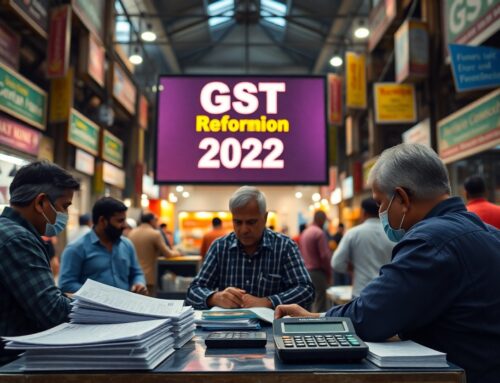– Abul Kalam Azad Sulthan, Advocate, High Court of Judicature at Madras and Madurai Bench of Madras High Court & Partner, Spicy Law Firm.
Introduction and Historical Perspectives
Trade Union Act, 1926 is the important law related to Trade Unions in India. Industrial revolution during the 19th century brought massive changes in England and other western countries. There are radical changes in every process of manufacturing, method of production, shipping etc, due to the Industrial revolution which resulted in changes in the social life. Due to the scientific and technology developments in the Industrial sector, there was a tremendous growth in every society, that caused emergence of two classes, namely the working class (wage earning class) and the Managerial class (entrepreneur class). [1]These two classes had conflicting interests and were striving hard to achieve the same. The working class claims higher wages and better working conditions while the entrepreneur class demands maximum production at minimum wages.
The Industrial Development in Western Countries started reflecting in this vast country, but at a slow pace. The Trade Union movement in India has emerged due to Industrial revolution, as a result of growing complexities of economic structure of the country.[2] Due to the slow pace of industrial development in this vast country prior to the first world war, there was a very slow growth of trade union movements in India. Instability of labour force, lack of leadership, deprivation of freedom of expression during the British rule were also the reasons for the slow rate of growth of trade union movements in India.[3]
The first organized labour movement in India was in 1884 by N.M.Lokhande, who was a factory worker in Bombay who organized an agitation and convened a conference of workers to make representations to the Factory Commission appointed by the then British Government to study the conditions of the working class in factories.
The period between 1904 to 1911 brought in tremendous growth in trade unionism in India.[4] During this period, the Printers’ Union in Bengal, the Kamgar Hitwardhak Sabha in Bombay and Postal Clubs in Madras, Bombay and Calcutta were formed. Ahmadabad Textile Labour Association is an important federation in the history of trade union movement in India as this was the first federation of the different occupational unions in the Ahmadabad textile units. It was formed due to the inspiration from the father of the nation, Mahatma Gandhiji and had close association with him. In 1920, the leaders of Indian National Congress, due to the necessity brought by the growth of Trade Unionism, founded the All India Trade Union Congress. It was the apex organization with a hierarchical set-up across the nation at the provincial and regional levels and finally linking the individual unions. In the year 1920, the AITUC for the first time represented the Indian Labour at the International Labour Organization.
Shri. N.M. Joshi is the father of modern trade unionism in India and he introduced the Trade Union Bill in the Assembly in 1921.[5] There was a struggle for legal recognition of trade unions in India during that time due to adverse conditions. The Government was reluctant to pass the bill and finally compelled to enact the Indian Trade Unions Act, 1926, due to heavy pressure from the political parties.
Before independence, the attitude of the colonial government was in favor of the foreign employer and to the protect the interest of British Business Owners. The British Colonial Government was acting mechanically in assuring minimum employment conditions to workers and deciding the merits of labour disputes. After independence, the Indian Government brought a fair deal to the working class and passed several labour welfare legislations conferring rights and benefits to the working class. The Factories Act, 1948, The Industrial Disputes Act, 1947, The Minimum Wages Act, 1948, The Payment of Wages Act, 1965, The Workmen’s Compensation Act, 1923, The Employees Provident Funds Act, 1952, The Maternity Benefit Act, 1961 etc were called “Welfare Legislations” as these legislations envisage welfare of workers.
Trade Union is a voluntary organization of the workers in a specific industry or occupation. Article 19(1)(c) of the Constitution of India guarantees freedom of association as a fundamental right and confers the workers, right to combine and organize for collective action or bargain. However such right is not available for certain category of jobs. It is due to the reasonable restriction which can be imposed by the Government as per the provisions of the Constitution of India.
Government Servants cannot form trade unions under the Trade Unions Act, 1926 (Tamilnadu N.G.O. Union vs. Registrar of Trade Unions, LLJ 753 (Mad)).[6]
In various judgments of the Supreme Court of India and by majority of Industrial Tribunals, held that “a dispute raised by a dismissed employee/workman will not be treated as an industrial dispute, unless it is supported by a trade union, registered or not, or by a body or section of workmen”.[7] Hence, a trade union or a section or a body of workmen must represent a dispute to be declared as Industrial dispute. Or else it will be considered as individual dispute.
Registration of a trade union is not mandatory. As the registered trade unions enjoy various privileges and immunities, it is better to get the trade union registered. The Indian Trade Unions Act, 1926 is the first legislation in India to register, regulate and promote trade unions in India. It was amended in 1964, by which the word ‘Indian’ was omitted and the act was rechristened as “The Trade Unions Act, 1926”.
Object and Scheme of Trade Union Act, 1926
The main object of the Trade Unions Act, 1926 is to provide machinery for the registration, regulation and protection of the rights and privileges of the trade unions. The term ‘trade union’ used in this act is not confined alone to the workers’ union, but also includes employers’ association as well. The act also prescribes for what purposes the trade union may spend its general funds and also give provisions for creating a separate fund for political purposes. The main object of the act is to ensure industrial harmony. The members of the registered trade unions are protected from various civil and criminal liabilities and enjoy immunities and privileges.
The Trade Unions Act, 1926 has 5 chapters and 33 sections.[8] Chapter I contains Sections 1 and 2. Section 1 gives primary aspects viz. title, extent and application of the act. Section 2 defines various terms under this act viz. Trade Union, Workmen, Trade, Business etc. Chapter II contains Section 3 to 14 and gives provisions for the registration of trade unions. Chapter III contains Section 15 to 28, dealing with rights and liabilities of the registered trade unions. Chapter IV contains Sections 29 and 30, conferring power on the appropriate government to make regulations regarding the trade unions. By exercising the power conferred under Section 29 of the act, the Union Government of India enacted “The Trade Unions Regulations, 1938”, and the state governments were also empowered to enact regulations for trade unions of the respective states. The Chapter V of the act contains Sections 31 to 33 gives provisions for the penalties and procedure.
What is a Trade Union? Meaning & Definition
Trade Union is commonly understood as an association of wage earners or workers. Usually it is a voluntary association of workers in a particular industry or craft. Trade Union is an association of wage earners for the purpose of maintaining and improving their working conditions. The definition of ‘Trade Union’ according to the Trade Unions Act, 1926 is same as the definitions in the British Trade Union Acts of 1871, 1875 and 1913.
Section 2(h) of the Trade Unions Act, 1926 defines Trade Union[9] as “any combination whether temporary or permanent, formed primarily:
- a) for the purpose of regulating relation between:
- i) Workmen and employers; or
- ii) Workmen and workmen; or
iii) Employers and employers.
- b) imposing respective conditions on the conduct of any trade or business and includes any federation of two or more trade unions, is called Trade Union:
Provided that this act shall not affect-
- i) Any agreement between partners as to their own business;
- ii) Any agreement between an entrepreneur and those employed by him as to such employment; or
iii) Any agreement in consideration of the sales of the goodwill of a business or of instruction in any profession, trade or handicraft.
Important elements of Trade Union:
- i) There must be combination of workmen and employers;
- ii) There must be trade or business; and
iii) The main object of the Union must be to regulate relations of employers and employees or to impose restrictive conditions on the conduct of any trade or business.
Registration of Trade Union
The main object of the Trade Unions Act, 1926 is to provide machinery for registration and regulation of Trade Unions. Although registration of a trade union is not mandatory, it is advisable to register the trade unions as the registered trade unions are entitled to get several benefits, immunities and protection under the act. There are specific rights and privileges conferred on the members of the registered trade unions. The members of the registered trade unions are entitled to get protection, immunity and certain exceptions from some civil and criminal liabilities. A trade union can only be registered under the Trade Unions Act, 1926, and cannot be registered under any other act including the Societies Registration Act or the Co-operative Societies Act or the Indian Companies Act. [10]
A Civil Servants’ Union cannot be registered under the Trade Unions Act, 1926. In the case of Tamilnadu N.G.O’s Union vs. The Registrar of Trade Unions (AIR 1962, Mad. 2341)[11], the Madras High Court dismissed the appeal on the ground that, to get the trade union registered under the Trade Unions Act, 1926, the members of the union must be workmen engaged in trade, business or industry and the appellants in this case are not in that capacity, as they are civil servants engaged in the tasks of the sovereign government.
In the case of Registrar of Trade Unions, West Bengal vs. Mihir Kumar Gocho (AIR 1963, Cal. 56)[12], the Calcutta High Court held that employees of E.S.I. Corporation would come within the meaning of workmen and hence, they could be registered under the Trade Unions Act.
Chapter II containing Sections 3 to 14 of the Trade Unions Act, 1926 and Central Trade Union Regulations, 1938[13] containing 17 Rules and Forms A, B and C provide for the procedure and formalities for registration of the trade unions. For registration of the trade union, an application shall be submitted to the Registrar of Trade Unions appointed by the appropriate government under Section 3 of the Trade Unions Act, 1926. Section 4 provides for the mode of registration.
According to Section 13 of the act, every registered trade union shall be a body corporate by the name under which it is registered. Such registered trade unions will have perpetual succession and a common seal. A registered trade union can sue on its own name and can acquire movable and immovable properties on its own name.
Recognition of Trade Union
There is no specific provision for the recognition of the trade unions under the Trade Unions Act, 1926. Hence, recognition is a matter of discretion in the hands of the employer. Provisions for the recognition of trade unions were included in the Trade Union (Amendment) Act, 1947, but the act has not been implemented. The Trade Union Bill, 1950 also provided for recognition of trade union (based on the largest membership among the existing trade unions), but the bill lapsed due to dissolution of parliament.
The Bombay Industrial Relations Act, 1946 and the state acts of Madhya Pradesh and Rajasthan have provisions making the recognition a compulsory process.[14] Once a trade union is recognized, the recognition cannot be withdrawn without complying with the rules of natural justice.
There are certain additional privileges and rights available for the recognized trade unions. Those are:
- i) the right to sole representation of the workers in any collective bargaining;
- ii) to raise issues and enter into agreements with employers on general questions concerning the terms and conditions of employment;
iii) to collect membership fees and subscriptions payable by members to the union within the premises of the undertakings or demand check off facility;
- iv) to put up notice board in the premises of the undertaking and affix notices relating to meetings, statements of accounts and other announcements;
- v) to discuss with employer the grievances of the workers; and
- vi) to nominate its representatives to the grievance committee or statutory and non-statutory bipartite committees.
Recognition of the Trade Union is different from registration of the Trade Union. A registered trade union is entitled to all protections, immunities, rights and privileges provided by the Trade Unions Act, 1926, even if it is not recognized by the employer.[15]
Recognition of Central Trade Unions
The Central Government gives recognition to Trade Union as Central Trade Union for the purpose of representing in the International Labour Organizations and International Conferences, if such trade union fulfils the following conditions:
- i) The Union has a minimum of five lakhs membership as on March, 1997.
- ii) The Union must have members from at least four states,
iii) The Union must have membership at least in four industries.
The Central Chief Labour Commissioner is authorized to verify the fulfillment of above conditions.
Privileges and Immunities of Registered Trade Unions
The Trade Unions Act, 1926 confers certain privileges and immunities to the members and leaders of the registered trade unions to enable them to carry out their legitimate trade union activities without any fear or threat of civil or criminal action/liability. It is the most important right without which the office bearers of the registered trade unions may not be able to discharge their duties efficiently.
Section 17 of the Act provides immunity from Criminal liability. According to this provision, the office bearers of the registered trade unions are immune from criminal liability for criminal conspiracy.
Section 18 provides immunity from civil liability. According to this provision, the leaders and office bearers of the registered trade unions are immune from civil suits in certain cases, viz. contractual liability, tortuous liability etc.
Collective Bargaining
The term “Collective Bargaining” was used by Beatrice Webb[16] in 1897 for the first time in his famous book “Industrial Democracy”. Collective Bargaining means negotiation between the employer and workers to reach agreement on working conditions and other conflicting interests of both sides (employer and workers).
In simple words, collective bargaining means bargaining between an employer or group of employers and a bonafide labour union.
There are few advantages and disadvantages of collective bargaining.
Advantages:
- i) Collective Bargaining imposes obligation on both parties to the dispute and creates a specific code of conduct for parties to the process.
- ii) The parties to the dispute undertake not to resort to strikes or lock-outs and thus collective bargaining ensures peace and industrial harmony.
Disadvantages:
- i) Increase in wages, and extra expenses to provide other amenities to workmen and improvement of working conditions can cause higher cost of production.
- ii) Political interference in the labour unions during the collective bargaining process increases the chance for adverse effects.
Funds of Trade Union
A registered trade union is entitled to maintain two kinds of funds. They are i) General Fund and ii) Political Fund. The Trade Unions Act, 1926 imposes certain conditions on the Trade Unions to spend/utilize the funds only for some specific purposes as stated under Section 15 (General Fund) and Section 16 (Political Fund) of the act.
According to Section 15 of the act, a registered trade union can create a general fund. Members of the registered trade union have to contribute to the general fund. The fund can be spend for the purposes as specifically stated in the Section 15 of the act.
Purposes for which the General Fund can be utilized:
- i) The payment of salaries, allowances and expenses to office bearers of the trade union.
- ii) The payment of expenses for the administration of the trade union including audit of accounts of the general fund.
iii) The expenses in connection with prosecution or defense undertaken for the purpose of securing or protecting any rights of the trade union.
- iv) The conduct of trade disputes on behalf of the union or any member.
According to Section 16, the trade union must create a separate political fund for the purpose of spending it for political cause.[17] Contributions to such political funds should be collected separately. Contribution to the political fund cannot be compelled or made as compulsory or condition to admit a person as member of the trade union. However the control and management of the political fund can be vested exclusively to those members who contributed to the political fund. Section 16(2) specifically states the purposes for which the political fund may be utilized. Those are:
- i) The payment of any expenses incurred by a candidate or prospective candidate for election as a member of any legislative body or any local authority. The expenses includes the expenses incurred before, during and after the election in connecting with such candidature;
- ii) Conducting any meeting or distribution of any literature or documents in support of such candidate or prospective candidate;
iii) Maintenance of any person who is a member of any legislative body or local authority;
- iv) Registration of electors or the selection of a candidate for any legislative body or local authority;
- v) Conducting of political meetings or distribution of political literature and documents to the members of the trade union or to the general public.
Rights, Duties and Liabilities
Rights of a registered trade union:
- i) Right of Admission: Admission as a member of trade union is not an absolute right. A registered trade union may impose certain qualifications and restrictions for admissions subject to the provisions of the Trade Unions Act and Rules as well as any other law in force.[18]
- ii) Right of Representation: A trade union can represent the employees in any industrial dispute and in case of individual dispute, with the written authorization of the employee. With such authorization, a trade union can represent before any conciliation officer, industrial tribunal, labour courts etc.
iii) Right to Contract: A registered trade union, being a legal person, can enter into agreements and contracts on its own name.
- iv) Right to own property: A registered trade union can purchase and own movable and immovable property on its own name.
- v) Right to Sue: A trade union is a juristic person. It can sue, argue before any labour courts, authorities and other courts on behalf of itself, and on behalf of its members.
- vi) Right to inspect books: Section 20 confers an important right to the members of the trade union. The office bearers or the members can inspect the books of account at such time as may be provided for in the rules of the trade union. The members, however, have no right to take copies of such books of account.
vii) Right to Amalgamate: According to Section 24 of the Trade Unions Act, 1926, two or more registered trade unions may amalgamate as one trade union with or without dissolution or division of funds of such unions.
Duties and Liabilities:
- i) A registered trade union has a duty to inform the Registrar of Trade Unions by sending a notice to that effect as to the change of address of the registered trade union.
- ii) The Act imposes on the registered trade union, duty to spend the funds (general fund, political fund), specifically allotted for the purposes as stated in the provisions of the act.
iii) A registered trade union is under a duty to see that not less than 1/2 of the total number of its office bearers in the case of unorganized sector and 1/3 or 1/5 whichever is less in other sectors (according to amendment in 2001[19]) must be persons actually engaged or employed in an industry with which the trade union is connected with. Appropriate governments by an order (general or special order) exempt a trade union from this provision.
- iv) Every registered trade union must submit every year, to the registrar of trade unions, a) a general statement, audited in the prescribed manner of all receipts and expenditures during the year ending 31st December, b) an audited statement of its assets and liabilities as on 31st December, c) a statement showing change of office bearers made by the trade union during that year and, d) a copy of the rules of the trade union amended up to date.
- v) Whenever any alteration is made in the rules of the registered trade union, a notice regarding the altered rules must be submitted to the registrar of trade unions within 15 days of such alteration. [20]
- vi) Failure to submit the above said returns, or give notice of alterations, shall make every office bearer or other persons who are responsible for such submission of particulars, liable to pay fine which may extend to Rs.5 and in case of continuing default additional fine of Rs. 5 for each week not exceeding Rs. 50 in total.
vii) Any person who gives false information to any member of the registered trade union with an intention of deceiving him is liable to be punished with fine which may extend to Rs.200.
viii) While electing a person as a member of the executive committee or for any other office as office bearer must be confirmed that such person has completed the age of 18 and such person is not convicted for any offence involving moral turpitude. (In case of any conviction and a period of 5 years has elapsed since his release then he is qualified to be elected for these posts.)
- ix) A minister or a person holding an office of profit in the Union or State shall not be elected as a member of executive or other office bearer of a registered trade union (according to amendment in 2001[21]).
Amalgamation and Dissolution of Trade Unions
Amalgamation of trade union means merger of two or more trade unions into one trade union. Section 24 to 26 of the Trade Unions Act, 1926 provides for amalgamation of trade unions. [22]
Amalgamation can be as follows:
- i) Amalgamation with dissolution of trade unions,
- ii) Amalgamation without dissolution of trade unions,
iii) Amalgamation with division of funds of trade unions, and
- iv) Amalgamation without division of funds of trade unions.
According to Section 24 of the Trade Unions Act, 1926, two or more registered trade unions may amalgamate together as one trade union with or without dissolution or division of the funds of such trade unions or either or any of the trade unions.
For the amalgamation to be valid, the following conditions must be satisfied:
- i) At least 1/2 of the members of the concerned trade unions must participate and vote for amalgamation; and
- ii) At least 60% of the votes recorded are in favor of the amalgamation.
Section 25 of the Act lays down the procedure for amalgamation for the trade union. A notice in writing as to the change of the name of the trade union after amalgamation must be served by the Secretary and seven members of the trade union to the Registrar of the Trade Unions. If the head office or any other office of the amalgamating trade unions are located in other states, notice is to be served to the Registrar of Trade Unions in such other state/states. The Registrar of Trade Unions on being satisfied with the fulfillment of conditions, registers the trade union by posting an entry in the Register and issues a certificate to that effect. The amalgamation comes into force with effect from the date of registration.[23]
Section 26 of the Trade Unions Act, 1926 gives provision for the change of name of a registered trade union. Change of name does not affect the rights and liabilities of the trade union or does not render any defect to the legal proceedings by or against the trade union. Similarly, amalgamation of registered trade union shall not prejudice any right of the trade unions or any right of a creditor to the trade union.
Dissolution of Trade Union: Section 27[24] of the Trade Unions Act, 1926 deals with the dissolution of a registered trade union. For a registered trade union, the rules of such registered trade union under Section 6 (j) of the act, must make provisions for the dissolution of that trade union. A registered trade union may be dissolved at any time. Notice of such dissolution signed by the Secretary and any other 7 members of the trade union must be submitted to the Registrar of Trade Unions within 14 days of such dissolution. The registrar on being satisfied that the dissolution was effected in accordance with the rules of the trade union, will register the fact of dissolution in the register. The dissolution will come to effect from the date of such registration of dissolution by the Registrar of Trade Unions in the register. In case of the rules of the registered trade union do not have any provisions for the distribution of funds of the trade union on dissolution, the Registrar of Trade Unions may divide the funds among its members is such manner as he thinks fit.[25] In case the rules of the registered trade union have provision for division of funds, the division of funds will be done in accordance to the provisions in the rules. In case of unregistered trade union, and the rules do not have provisions for dissolution, then such trade union may be dissolved with the consent of all the members of the trade union, or by an order of competent court.
Conclusion
Trade Unions Act, 1926 is one of the important welfare legislation giving provisions for registration, regulation, benefits and protection for trade unions. As such legislations envisage welfare of workers, these are called ‘welfare legislation”.[26] In India, agreements between the Trade Union and employers are enforceable under Section 18 of the Industrial Disputes Act, 1947 by filing a petition in Labour Court or Industrial Tribunal.
Trade Unionism in India is of recent origin in India. During the British rule, the Trade Union movements were totally suppressed by the then British Government. Trade Unionism is accorded recognition in 1926 for the first time in India, with the passing of Trade Unions Act, 1926. In the recent years, Trade Unionism witnessed tremendous growth and development in India, not only in the Industrial Sector, but also in the agriculture and other allied sectors.
Works Cited – Bibliography
Sinha: Industrial Relations,Trade Unions,and Labour Legislation, 2e.
B.P. Guha: Wage Movement in Indian Industries: As Reflected in Collective Bargaining Agreements.
S.C. Srivatsava: Industrial Relations and Labour Laws.
Bare Act: Trade Unions Act, 1926 along with Central Trade Unions Regulations, 1938. – Universal Law Publishing
Walter V Osborne, Mark Hayler 1847-1927 Judge: Trade Unions and the Law.
P.L.Malik: K.D. Srivastava’s Law Relating to Trade Unions and Unfair Labour Practices in India: with Supplement.
Ali Amjad: Labour, Legislation and Trade Unions in India and Pakistan
Justice P.S. Narayana: The Trade Unions Act, 1926
B.L.Mehta: Trade union movement in India
[1] S.C. Srivatsava: Industrial Relations and Labour Laws.
[2] B.P. Guha: Wage Movement in Indian Industries: As Reflected in Collective Bargaining Agreements.
[3] Sinha: Industrial Relations,Trade Unions,and Labour Legislation, 2e.
[4] Ali Amjad: Labour, Legislation and Trade Unions in India and Pakistan
[5] P.L.Malik: K.D. Srivastava’s Law Relating to Trade Unions and Unfair Labour Practices in India: with Supplement.
[6] Tamilnadu N.G.O. Union vs. Registrar of Trade Unions, LLJ 753 (Mad)
[7] P.L.Malik: K.D. Srivastava’s Law Relating to Trade Unions and Unfair Labour Practices in India: with Supplement.
[8] Bare Act: Trade Unions Act, 1926 along with Central Trade Unions Regulations, 1938. – Universal Law Publishing
[9] Bare Act: Trade Unions Act, 1926 along with Central Trade Unions Regulations, 1938. – Universal Law Publishing
[10] Justice P.S. Narayana: The Trade Unions Act, 1926
[11] Tamilnadu N.G.O’s Union vs. The Registrar of Trade Unions (AIR 1962, Mad. 2341)
[12] Registrar of Trade Unions, West Bengal vs. Mihir Kumar Gocho (AIR 1963, Cal. 56)
[13] Bare Act: Trade Unions Act, 1926 along with Central Trade Unions Regulations, 1938. – Universal Law Publishing
[14] P.L.Malik: K.D. Srivastava’s Law Relating to Trade Unions and Unfair Labour Practices in India: with Supplement.
[15] Walter V Osborne, Mark Hayler 1847-1927 Judge: Trade Unions and the Law.
[16] B.P. Guha: Wage Movement in Indian Industries: As Reflected in Collective Bargaining Agreements.
[17] S.C. Srivatsava: Industrial Relations and Labour Laws.
[18] Bare Act: Trade Unions Act, 1926 along with Central Trade Unions Regulations, 1938. – Universal Law Publishing
[19] The Trade Unions (Amendments) Act, 2001
[20] B.L.Mehta: Trade union movement in India
[21] The Trade Unions (Amendments) Act, 2001
[22] P.L.Malik: K.D. Srivastava’s Law Relating to Trade Unions and Unfair Labour Practices in India: with Supplement.
[23] S.C. Srivatsava: Industrial Relations and Labour Laws.
[24] Bare Act: Trade Unions Act, 1926 along with Central Trade Unions Regulations, 1938. – Universal Law Publishing
[25] Sinha: Industrial Relations,Trade Unions,and Labour Legislation, 2e.
[26] B.L. Mehta: Trade union movement in India
– This article was published as part of coursework for the NUJS MA in Business Laws course.







Leave A Comment